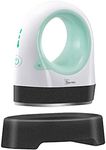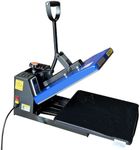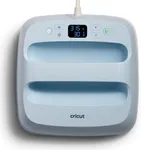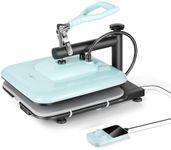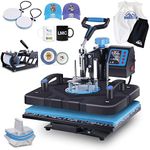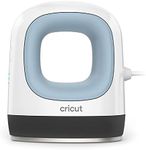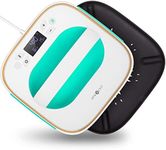Buying Guide for the Best Heat Presses
Choosing the right heat press is all about matching the machine to your specific needs, whether you're making custom t-shirts, mugs, hats, or other items. It's important to think about what materials you'll be working with, how often you'll use the press, and the size of your typical projects. Understanding the main features and how they affect your workflow will help you make a confident decision.Type of Heat PressThe type of heat press refers to the way the machine opens and operates. The most common types are clamshell, swing-away, and draw. Clamshell presses open like a clamshell and are compact, making them good for small spaces and simple projects. Swing-away presses have a top platen that swings away from the lower platen, offering more workspace and safety, especially for thicker items. Draw presses have a lower platen that pulls out, giving you easy access to your work area. Your choice should depend on your workspace, the types of items you plan to press, and your comfort with handling hot surfaces.
Platen SizePlaten size is the measurement of the heated surface where you place your material. Common sizes range from small (around 9x12 inches) to large (16x20 inches or more). Smaller platens are suitable for pressing small items like baby clothes or patches, while larger platens are better for adult t-shirts, hoodies, and bigger designs. To pick the right size, consider the largest item you plan to press regularly and choose a platen that can accommodate it comfortably.
Temperature Range and AccuracyTemperature range is how hot the press can get, and accuracy is how well it maintains the set temperature. Different materials and transfer types require different temperatures, so a wider range gives you more flexibility. Accuracy is important because uneven or incorrect temperatures can ruin your projects. If you plan to work with a variety of materials, look for a press with a broad and precise temperature range. If you only work with one type of transfer, a basic range may be enough.
Pressure AdjustmentPressure adjustment lets you control how tightly the press closes on your material. Some projects, like thick hoodies or tiles, need more pressure, while delicate fabrics need less. Easy and precise pressure adjustment is important for consistent results. If you plan to work with a variety of materials and thicknesses, look for a press with a simple and reliable pressure adjustment mechanism.
Timer ControlsTimer controls allow you to set how long the press applies heat and pressure. This is important because different transfers and materials require different pressing times. A built-in timer helps you avoid over- or under-pressing, which can affect the quality of your finished product. If you want convenience and consistency, choose a press with an easy-to-use digital timer.
Portability and WeightPortability and weight refer to how easy it is to move or store the heat press. Lighter, more compact presses are easier to transport and store, making them ideal for small spaces or mobile businesses. Heavier presses are usually more stable and durable, which is better for frequent or high-volume use. Think about where you'll use the press and whether you'll need to move it often when making your choice.
Versatility (Attachments and Compatibility)Versatility means how many different types of items you can press with the machine. Some heat presses come with or support attachments for hats, mugs, or plates, allowing you to expand your product range. If you want to press more than just flat items like t-shirts, look for a press that offers compatible attachments or is designed for multiple uses.




